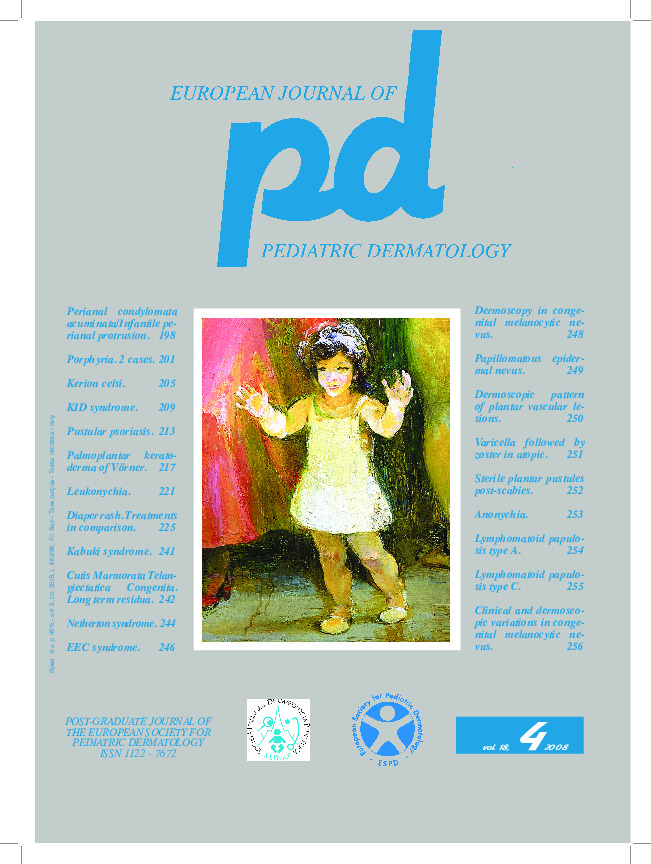EEC syndrome in two sisters with healthy parents.
Downloads
How to Cite
Bonifazi E. 2008. EEC syndrome in two sisters with healthy parents. Eur. J. Pediat. Dermatol. 18 (4):246 -47.
pp. 246 - 247
Abstract
In EEC syndrome -Ectrodactyly, Ectodermal dysplasia, Cleft lip/palate- (2), besides malformations of the hands and feet (lack of a radius with lobster-claw deformity, signs of ectodermal dysplasia (hypotrichosis, hypodontia, dystrophic nails, etc.) and cleft lip/palate, there can be eye duct anomalies, deafness, renal anomalies and mental retardation.EEC syndrome is inherited as an autosomal dominant trait, so that in the first case, after the identification of the mutation and its lack in her parents, a "de novo" mutation had been hypothesized with consequent scarce risk in case of further pregnancies. The second sister affected led to hypothesize, on the other hand, a gonadal mosaicism. The skin signs of EEC syndrome, besides the signs of ectodermal dysplasia, consist of vesico-pustular dermatitis of the scalp (3), although the latter is more frequent in the cleft lip/palate, ectodermal dysplasia, ankyloblepharon, ichthyosiform syndrome (1).
This dermatitis was present in both our sisters affected by EEC syndrome. The exuding, vesicopustular dermatitis affected the scalp, the inguino-anal region and the hands and was thus reminiscent of acrodermatitis enteropathica. The hypotrichosis contributed to the similarity with the latter disorder.
Keywords
EEC syndrome, Sisters

